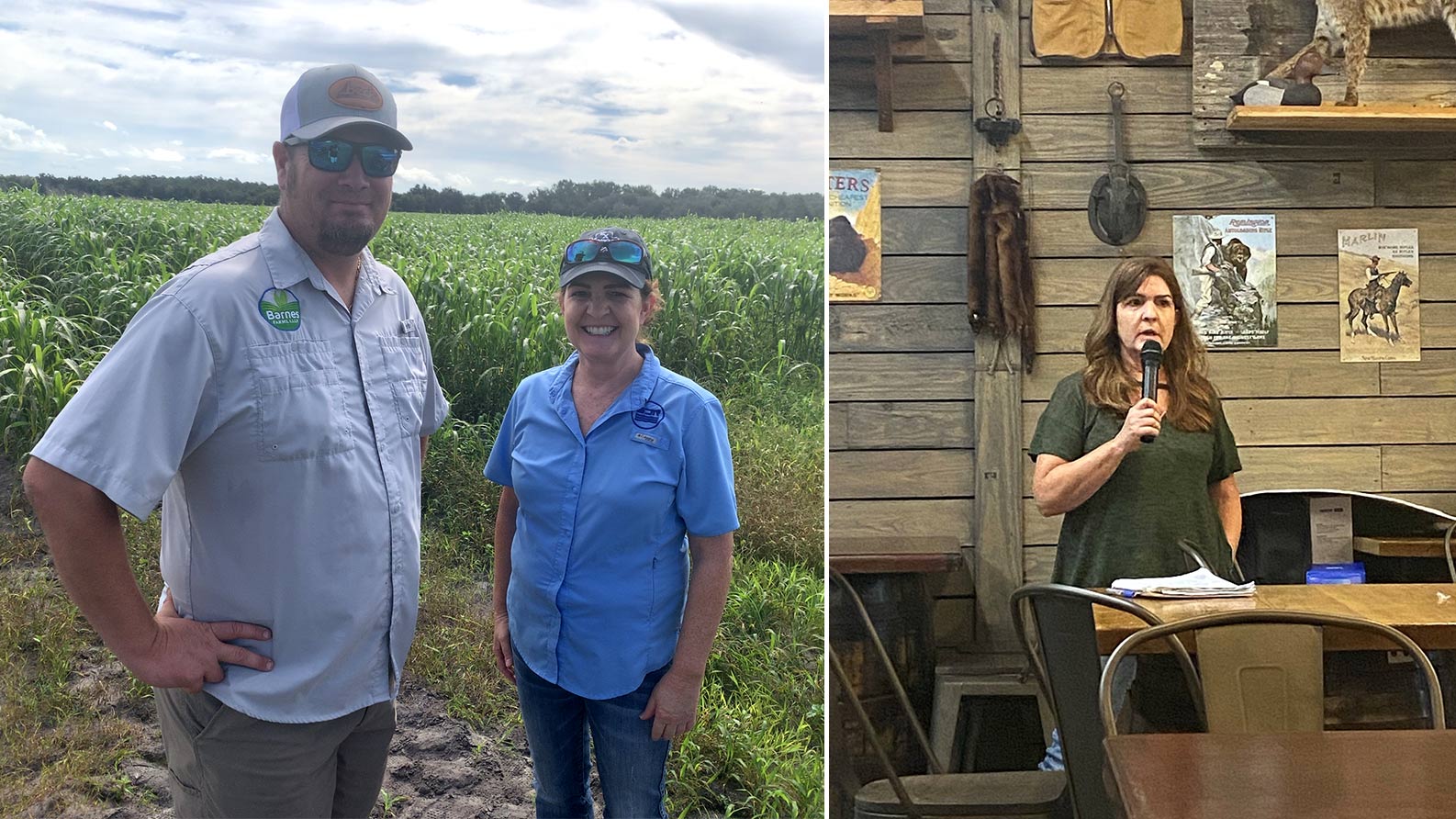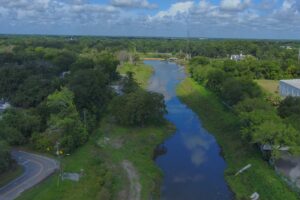District works with ag community to save water, reduce fertilizer runoff
Dec. 2, 2021
District Technical Program Manager Suzanne Archer visits a Hastings area farm (left) and speaks to a cattleman’s group as part of her work with the District’s Ag Assistance Program.
Guest column: Suzanne Archer, Technical Program Manager, Bureau of Water Supply Planning
With commodities ranging from artichokes to zucchini, a wide variety of agricultural products are grown within the boundaries of the St. Johns River Water Management District. Whether it is citrus, cattle, cabbage or chip potatoes, producers all have one thing in common — they depend on water for their livelihood and production of an affordable food supply. Agriculture is the second largest water user in the District, accounting for 23% of the water used in 2020.
District staff assist producers in a variety of ways. They work with producers to apply for consumptive water use permits, submit water use reports and schedule flow meter checks. However, it is the District’s agricultural cost-share programs that have really helped ranchers and growers to move the needle when it comes to water conservation and reduction in fertilizer runoff.
The Districtwide Agricultural Cost-share Program began in July 2015 and has funded 118 projects to help growers save water and reduce nutrient loads. A second program is the Tri-County Agricultural Area (TCAA) Water Management Partnership Cost-Share Program, a collaboration between the District, the Florida Department of Environmental Protection (DEP) and the Florida Department of Agriculture and Consumer Services (FDACS). This program has funded 143 projects in Putnam, Flagler and St. Johns counties since 2012.
Irrigation systems have become much more efficient over the past 30 years, with many growers switching to more efficient systems. Now technology plays a much larger role in water conservation. Pump automation allows a grower to rely on inputs from soil moisture probes and weather stations to turn the irrigation on and off at predetermined soil moisture levels. Telemetry allows growers to use their smartphones to turn off the irrigation from remote sites in the event of rainfall.
Just as irrigation has become more reliant on technology, fertilizer application is now routinely done with the assistance of GPS-enabled equipment and sensing technology that allows the grower to apply the fertilizer right where the plant needs it in just the right amounts for that particular plant at its current stage of growth.
Wild Goose Farms in Marion and Lake counties is a diversified operation growing blueberries, citrus, containerized nursery trees and shrubs, cattle and hay. They have participated in the Districtwide Agricultural Cost-Share Program several times in order to conserve water and reduce fertilizer use and runoff. Projects include pump automation, precision fertilizer application equipment and an irrigation conversion resulting in an estimated reduction of over 18 million gallons of water per year, an annual reduction of 7,289 pounds of total nitrogen loading and an annual reduction of 1,276 pounds of total phosphorus loading.
Many agricultural operations provide water recharge and wildlife habitat in addition to food and ornamental landscape production. It is through these partnerships with the District that growers can implement projects that may otherwise be cost prohibitive while protecting our natural resources.
Related topics
- Water resources for Florida agriculture
- Tri-County Agricultural Area Grower recognized for environmental leadership
- The District helps Agriculture implement water protection and conservation projects
- Here’s how the district’s agricultural cost-share program helps growers use technology to reduce water use






